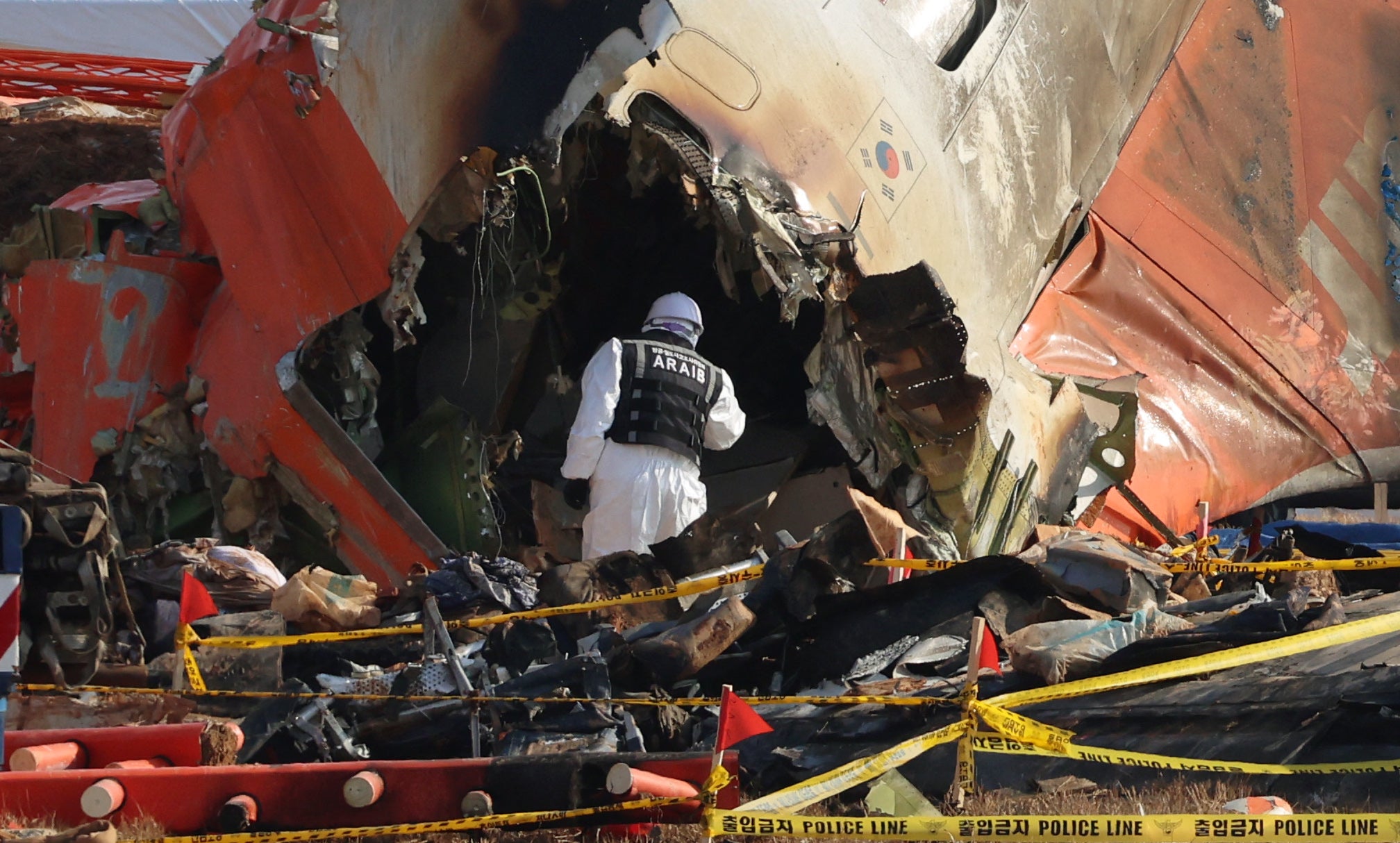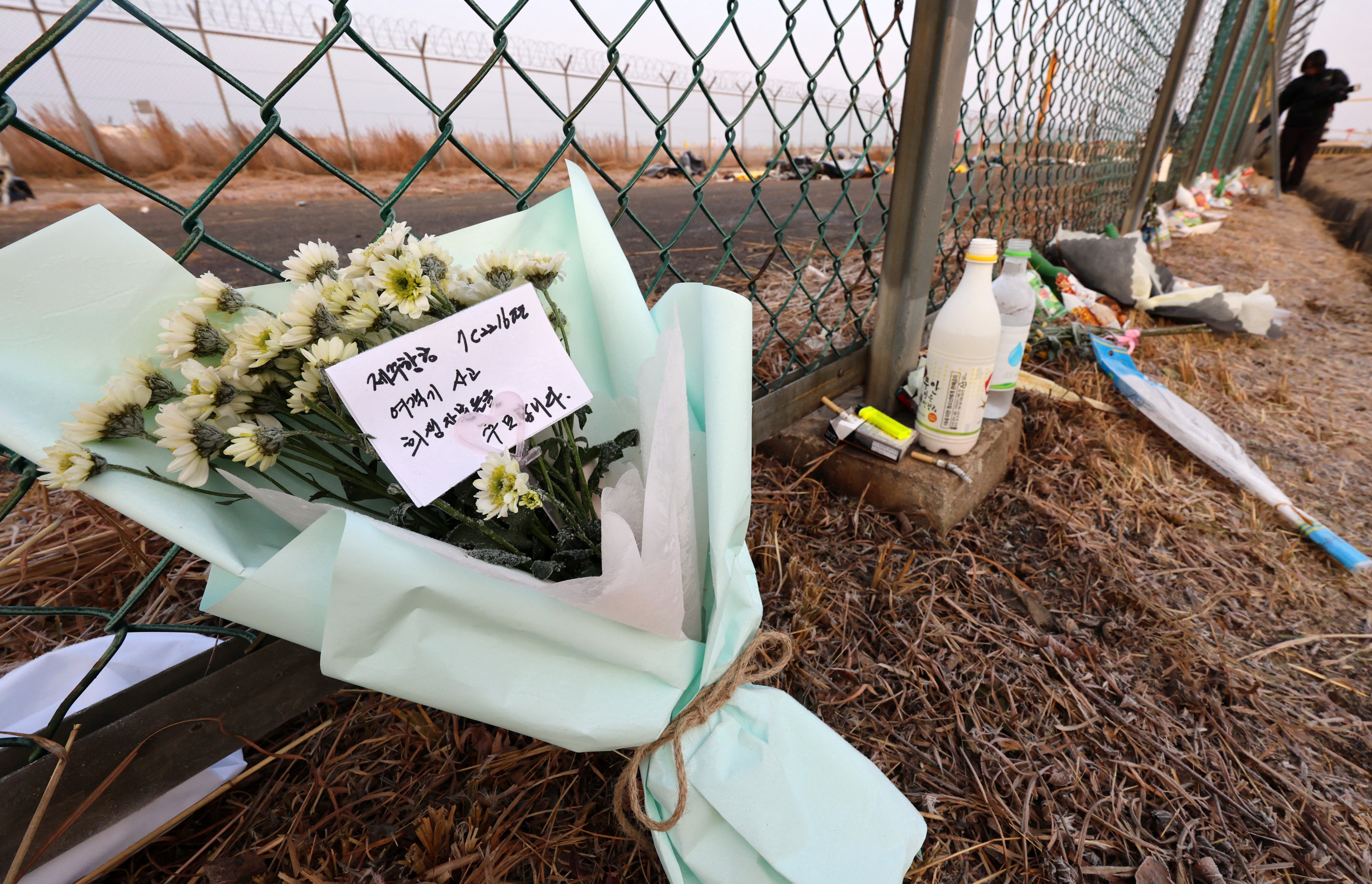South Korean police raided Jeju Air and the operator of the Muan airport as they ramped up their investigation into Sunday’s catastrophic plane crash that claimed 179 lives, marking the worst aviation disaster in the country’s recent history.
A Jeju Air Boeing 737-800 crashlanded after failing to deploy its landing gear, skidded off the runway at the Muan airport and rammed into a concrete embankment.
The plane burst into flames, killing all but two of its 181 passengers and crew. The survivors, crew members seated at the rear, suffered injuries but were rescued.
Investigators searched the offices of the airport operator and the transport ministry’s aviation authority in the southwestern county of Muan as the well as office of Jeju Air in Seoul, the South Jeolla provincial police said in a statement.
They planned to seize documents and materials related to the operation and maintenance of the aircraft as well as the operation of airport facilities, a police official told Reuters.
Jeju Air was cooperating with police, a director at the airline, Song Kyeong Hoon, said. The airport operator was yet to issue a comment.
Authorities also banned the chief executive of Jeju Air from leaving South Korea. “The investigation team imposed a travel ban on two individuals, including Jeju Air CEO Kim E Bae,” police said.

In the wake of the crash, aviation safety experts expressed concerns about the embankment the plane rammed into, questioning the design of the structure designed to support navigation equipment.
“This rigid structure proved catastrophic when the skidding aircraft made impact,” Najmedin Meshkati, engineering professor at the University of Southern California, said.
Such installations should use lighter materials such as metal towers to minimise damage during collisions, he said.
Investigators were also examining whether the embankment should have been constructed from lighter materials to reduce its potential danger.

The incident was also under investigation by the US National Transportation Safety Board, Federal Aviation Administration, and Boeing, in collaboration with South Korean authorities.
Preliminary analysis indicated the aircraft encountered multiple issues, including a bird strike and an engine problem, before the crash.
A video of the crash showed the aircraft belly-landing at speed and bursting into flames after hitting the concrete wall. The pilot had declared an emergency after warning of a bird strike but reportedly attempted a second landing without success.
Black boxes found in the wreckage were being analysed. The conversion of data from the cockpit voice recorder to audio files, which could provide critical information about the final minutes of the flight, was completed on Thursday, deputy transport minister for civil aviation Joo Jong Wan said.
Transport ministry officials said the audio files might not be publicly released due to the sensitivity of the investigation.
Acting president Choi Sang Mok, meanwhile, ordered immediate inspections of all Boeing 737-800 aircraft in South Korea. “Given the public concern, thorough reviews of operation, maintenance, and training procedures must be prioritised,” Mr Choi said during a disaster management meeting.
The tragedy sparked a week of national mourning. Save for two Thai citizens, the victims of the crash were all South Koreans, many of them returning home from holidays in Bangkok.
Bereaved relatives held a memorial service at the site of the crash on New Year’s Day, laying white flowers and offering traditional rice cake soup in tribute to their loved ones.







